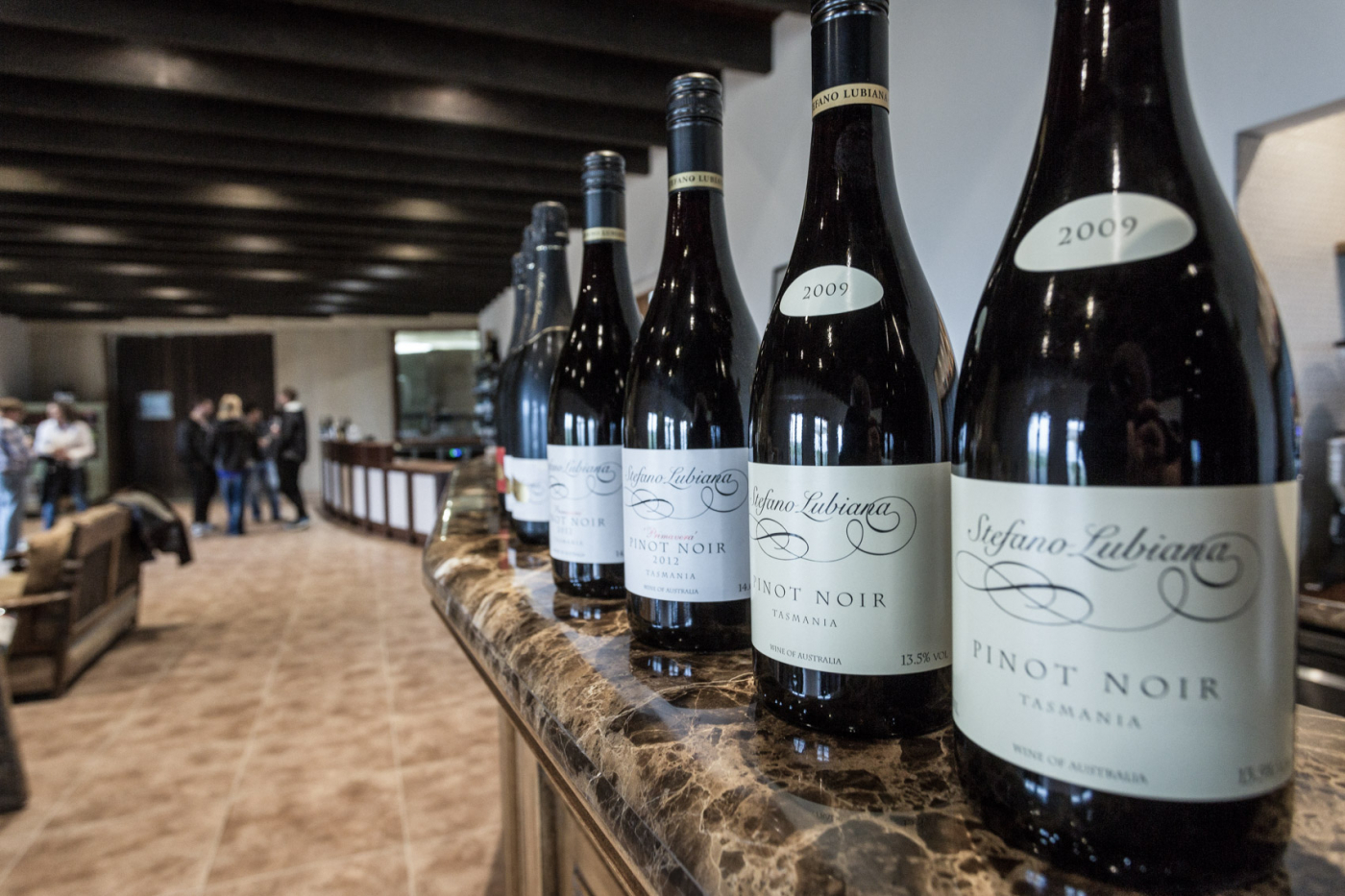
Eating with Tasmania’s wine master | Stefano Lubiana
David J. Constable goes Down Under to eat and drink with one of the world’s more offbeat wizards of wine – Steve Lubiana, of Stefano Lubiana, Tasmania

David J. Constable goes Down Under to eat and drink with one of the world’s more offbeat wizards of wine – Steve Lubiana, of Stefano Lubiana, Tasmania

Perhaps it was something to do with my overt smugness – while I was sipping something sparkling, dressed in my shorts, friends were shivering in a boreal climate above the Equator. Or maybe it was the fact that I was visiting Stefano Lubiana Wines in Granton, Tasmania at the beginning of my two-week gastro jaunt Down Under, so everything felt new and exciting. No matter what, I fell for this Apple Isle winery instantly.
Even as Steve Lubiana, the fifth-generation wine-maker and charismatic proprietor of the Lubiana estate, reached for the 2005 Vintage Brut, filling my flute with the golden hue of flowing bubbles, I’d made up my mind.
This is what I wanted to see in Australia: an emphasis on the seasonal and regional, produce from which there’s no hiding
Having operated as a sole winery since 1990, the osteria is still in its infancy. It presents the option to those travelling to the vineyard for their bottle replenishment, to stay and eat. They can explore the estate and sample another grape variety or vintage alongside rustic grub to accompany the plonk; enjoying impressive views across the Derwent River.

Stefano Lubiana, Tasmania
A quick tour of the fermentation barrels and bottling line, and down into the subterranean depths of a typically passive moldy cellar, we moved on to the allotment patch. It’s a carpet of vegetation with bountiful reward: broad beans, cabbage, kale, capsicums, asparagus, garlic, leek and potatoes.
The menu is short and tight, drawing on Italian influences and available supply. There’s an agrarian philosophy. Everything is picked-plucked-and-plundered for the kitchen. This is typified by the antipasto, that traditionally Italian platter, deconstructed, then reconstructed with regional Aussie fare.
Cured local meats (salami, prosciutto and mortadella) join a “semi-hard” Fontina cheese from the Bay of Fires; broad beans, cornichons, pickled mushrooms and artichokes are all from the vegetable patch. Talatta marinated white anchovies are the only imported ingredient, introducing a deep-salt taste of the Med. And there’s a truffle-salted egg which is a real treat, and garden rocket pesto and wood-fire ciabatta, both of which are made onsite.

Steve Lubiana, Stefano Lubiana, Tasmania
This is what I wanted to see in Australia: an emphasis on the seasonal and regional, produce from which there’s no hiding. Food reflective of the land and its people. It doesn’t matter that it’s global grub, reminiscent of the trattoria lunches in Tuscany, the ingredients started out life in Australian soil and ended up on my plate here, in Tasmania.
Actual Australian food is a myth. A fiction. No such thing exists. It’s just a fabrication, created so the rest of the world can take them seriously. From those locals I asked, none could give me an answer as to “what Australian food is”. So you tell me: what is their national cuisine, their one universally travelled dish?
Kangaroo? No. Skippy is eaten less than you might expect
Kangaroo? No. Skippy is eaten less than you might expect, with Aussies having an ingrained reluctance to eat their national emblem, despite it being lean, free-range and full of iron. Koala? No. Koalas have more sexually transmitted diseases than a Mexican whorehouse. You might say barbecue, but plenty of countries do that well; from the United States and Caribbean islands, to the mangal grilling in Turkey and Eastern Mediterranean.
Instead, the food and techniques of other nations were stolen. An epicurean devotion takes influence from the country’s immigration with all the cookbooks and handed-down recipes of Italian, French, German, Dutch, Croatian, Indian, Asian (even the “Ten Pound Poms”) adopted.
 It’s a testament to the country’s multiculturalism and epitomised by the heritage food in this Tasmanian osteria. What started as undeniable cuisine-grabbing has become the country’s greatest asset. Food is the finest showcase of Tasmania’s diversity and the multiculturalism that sprouted here, and they’re using that learnt skill and technique better than anywhere else in the country right now.
It’s a testament to the country’s multiculturalism and epitomised by the heritage food in this Tasmanian osteria. What started as undeniable cuisine-grabbing has become the country’s greatest asset. Food is the finest showcase of Tasmania’s diversity and the multiculturalism that sprouted here, and they’re using that learnt skill and technique better than anywhere else in the country right now.
Mains amplify this theory with chicken in pollo alla cacciatara sourced from Marion Bay and Camp Grim lamb from the north of the island in Lombo di Agnello. Octopus from Pirate’s Bay in Eagle Hawk is used for polpo alla giglia, the gently heated octopus served al dente, clinging to just enough olive oil in its jelly-suckers to slip ‘n’ slide its waving tentacle into my mouth.
I passed on dessert, but dessert arrived anyway. It wasn’t the dolce di tiramisu or formaggio with cave-ripened Taleggio and 10 month old Monte Vecchio advertised, instead I was presented with a lemon verbena and pistachio semifreddo. Semifreddo translates in Italian as “half-cold” so it’s an easy dessert to consume. The creamy mix of frozen custard is aided by another estate carafe of 2012 iced Sauvignon Blanc. It’s a marvellous combination and made much of the detail needed for this review problematic to recall. C
Stefano Lubiana Wines & Osteria, 60 Rowbottoms Road, Granton, Tasmania, Australia 7030 Tel: +61 (3) 6263 7457; slw.com.au